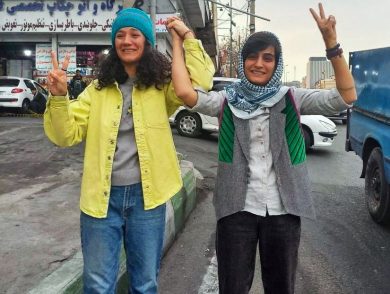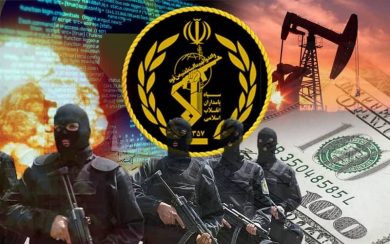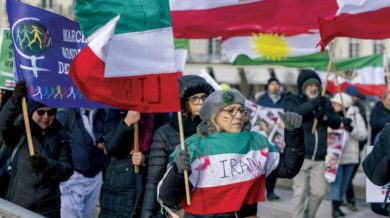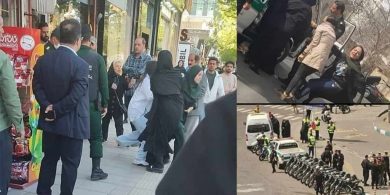Qasem Soleimani, the late commander of the Quds Force, the external operations wing of Iran’s Islamic Revolutionary Guard Corps (IRGC), was one of the most influential and controversial figures in modern Middle Eastern geopolitics. For over two decades, Soleimani orchestrated a vast network of proxy militias, terrorist organizations, and covert operations, solidifying Iran’s influence across the region. While hailed as a hero by some in Iran, his legacy is deeply tied to the proliferation of terrorism, sectarian conflict, and destabilization throughout the Middle East.
This post delves into Soleimani’s role in expanding terrorism in the region, exploring his methods, alliances, and the devastating impact of his actions on regional stability.
The Rise of Qasem Soleimani
Born in 1957 in Iran’s Kerman province, Soleimani joined the IRGC shortly after its creation in the wake of the 1979 Iranian Revolution. He quickly rose through the ranks during the Iran-Iraq War (1980–1988), where his tactical acumen earned him recognition. In 1998, he was appointed commander of the Quds Force, the IRGC’s elite unit responsible for foreign operations and Iran’s regional strategy.
Under Soleimani’s leadership, the Quds Force became the spearhead of Iran’s strategy to project power beyond its borders. His approach combined military tactics, ideological influence, and the cultivation of loyal proxy groups, making him a central figure in Iran’s campaign of state-sponsored terrorism.
The Quds Force Under Soleimani
As commander of the Quds Force, Soleimani turned the unit into one of the most formidable tools of Iran’s foreign policy. His tenure was marked by:
- Expansion of Proxy Networks: Soleimani cultivated relationships with non-state actors and militant groups across the Middle East, including Hezbollah in Lebanon, Shiite militias in Iraq, and the Houthis in Yemen.
- Arms and Training: He facilitated the transfer of weapons and provided advanced military training to these groups, enabling them to carry out sophisticated attacks.
- Coordination of Regional Operations: Soleimani acted as a strategist, coordinating efforts between Iran’s allies and proxies to achieve Tehran’s objectives.
Key Regions of Influence
1. Iraq
Iraq became a centerpiece of Soleimani’s strategy following the 2003 U.S.-led invasion, which toppled Saddam Hussein. Soleimani seized the opportunity to expand Iranian influence, supporting Shiite militias that would later become some of the most powerful forces in Iraq.
- Militia Networks: Groups like Kata’ib Hezbollah and Asa’ib Ahl al-Haq received funding, weapons, and training from Soleimani’s Quds Force. These militias targeted U.S. forces with deadly attacks, including the use of explosively formed penetrators (EFPs), which caused significant American casualties.
- Political Manipulation: Soleimani also influenced Iraqi politics, ensuring that pro-Iranian factions gained power and maintained loyalty to Tehran. His efforts entrenched sectarian divisions, undermining Iraq’s sovereignty and stability.
2. Syria
Soleimani was instrumental in preserving the Assad regime during the Syrian Civil War, which began in 2011. His intervention turned the tide of the conflict in Assad’s favor.
- Foreign Fighters: Soleimani organized tens of thousands of fighters from across the region, including Hezbollah operatives and Shiite militias from Iraq, Afghanistan, and Pakistan. These forces were pivotal in key battles, such as the recapture of Aleppo in 2016.
- Coordination with Russia: Soleimani played a key role in securing Russian military intervention in Syria, creating a powerful alliance that devastated opposition forces and civilian populations alike.
3. Lebanon
Hezbollah, Iran’s most significant proxy in Lebanon, was one of Soleimani’s greatest achievements. Under his guidance, Hezbollah evolved from a domestic insurgent group into a regional power with advanced military capabilities.
- Weapons Transfers: Soleimani oversaw the transfer of rockets, missiles, and drones to Hezbollah, enabling it to threaten Israel and maintain dominance in Lebanon.
- Regional Operations: He also coordinated Hezbollah’s involvement in conflicts outside Lebanon, including its deployment in Syria and support for militias in Iraq and Yemen.
4. Yemen
Soleimani expanded Iran’s reach into the Arabian Peninsula by supporting the Houthi insurgency in Yemen. The Quds Force provided advanced weaponry, including ballistic missiles and drones, which the Houthis used to target Saudi Arabia and disrupt global oil supplies.
Soleimani’s Methods
Soleimani’s approach to expanding Iran’s influence relied on several key tactics:
- Cultivating Loyalty: Soleimani fostered personal relationships with militia leaders, earning their loyalty through direct support and ideological alignment.
- Weaponizing Sectarianism: He exploited Sunni-Shiite divisions, positioning Iran as the defender of Shiite communities while demonizing Sunni-majority regimes.
- Orchestrating Terror Attacks: Soleimani’s Quds Force facilitated or directly orchestrated numerous terror attacks targeting civilians, military personnel, and infrastructure.
- Espionage and Intelligence: The Quds Force under Soleimani carried out covert operations, including assassination plots against dissidents and foreign officials.
The Human Cost
Soleimani’s legacy is marked by immense human suffering. His actions directly contributed to:
- Mass Displacement: Millions of people in Syria, Iraq, and Yemen were displaced due to conflicts fueled or prolonged by Soleimani’s proxies.
- Civilian Casualties: Soleimani’s militias were involved in massacres, indiscriminate bombings, and sieges that devastated civilian populations.
- Sectarian Violence: His strategy deepened sectarian divides, leading to cycles of violence that continue to plague the region.
International Reactions
Soleimani’s activities drew widespread condemnation from the international community. The United States designated him and the Quds Force as terrorists, imposing sanctions aimed at curbing their operations. His role in orchestrating attacks on U.S. forces and allies made him a central figure in the tension between Iran and the West.
The Killing of Qasem Soleimani
On January 3, 2020, Soleimani was killed in a U.S. drone strike near Baghdad International Airport. His death marked a significant escalation in U.S.-Iran tensions. While Iran mourned him as a martyr, his death was welcomed by many as a blow to Iran’s network of terror.
The killing, however, has not diminished the Quds Force’s activities. Soleimani’s successors continue to implement his strategies, demonstrating the resilience of the system he built.
Conclusion
Qasem Soleimani was a master strategist and a driving force behind the IRGC’s campaign to expand Iran’s influence through terrorism and proxy warfare. His role in orchestrating conflicts across the Middle East has left a legacy of destruction, instability, and human suffering. While his death was a significant moment, the structures he established continue to pose a threat to regional and global security.
Addressing the impact of Soleimani’s actions requires a comprehensive approach, including dismantling the IRGC’s networks, supporting affected nations, and fostering regional stability. Only then can the Middle East begin to recover from the shadow of his influence.
Join Our Newsletter!
Stay informed with the latest updates, news, and ways to take action in the fight for justice and global security. Sign up now to get updates delivered straight to your inbox!





